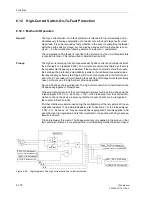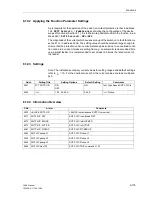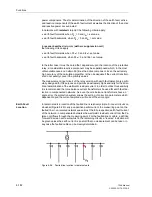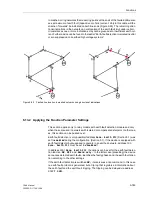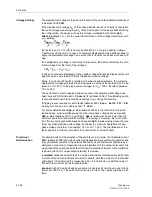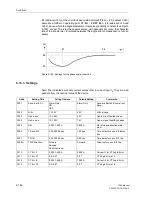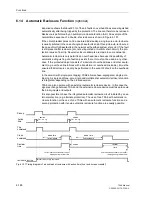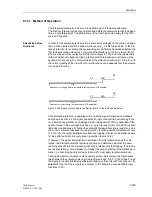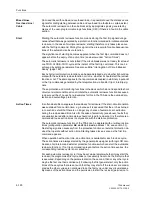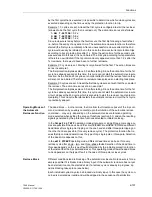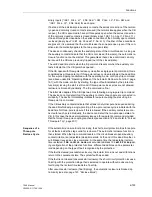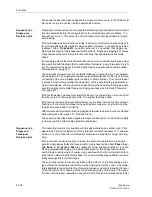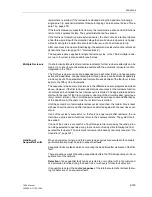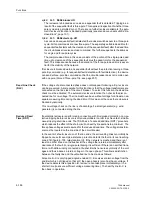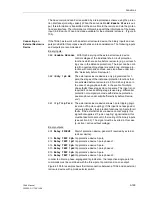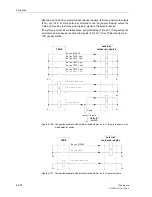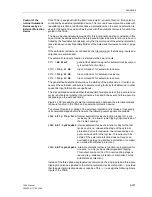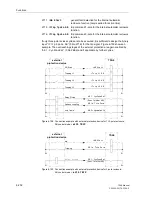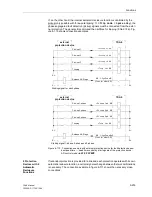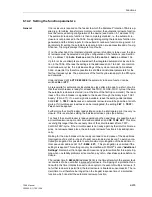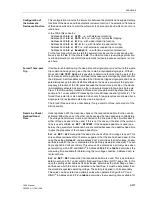
Functions
6-192
7SA6 Manual
C53000-G1176-C156-2
cycles. If blocking takes place while the cycle concerned is already running, this leads
to aborting of the reclosure, i.e. no reclosure takes place even if other valid cycles
have been parameterized.
Internal blocking signals, with a limited duration, arise during the course of the reclose
cycles:
The reclaim time
T-RECLAIM
is initiated along with every automatic reclosure com-
mand. If the reclosure is successful, all the functions of the automatic reclosure return
to the quiescent state at the end of the reclaim time; a fault after expiry of the reclaim
time is treated as a new fault in the network. Re-tripping by a protection function during
the reclaim time initiates the next reclose cycle in the case of multiple reclosure; if no
further reclosure is permitted, the last reclosure cycle is declared as unsuccessful if
re-tripping within the reclaim time takes place. The automatic reclosure is blocked dy-
namically.
The dynamic blocking condition locks out the reclosure for the duration of the dynamic
blocking time (0.5 s). This occurs for example after a final trip or if other conditions
block the automatic reclosure function after starting has taken place. Restarting is
locked out for this time. When this time expires, the automatic reclosure function re-
turns to its quiescent state and is ready for a new fault in the power system.
If the circuit-breaker is closed manually (with the circuit breaker control discrepancy
switch via a binary input, refer also to Subsection 6.22.1), the automatic reclosure is
blocked for a Manual–Close–blocking time
T-BLOCK MC
. If a trip command is issued
during this time, it can be assumed that a metallic short-circuit is the cause (e.g. closed
earth switch). Every trip command within this time is therefore a final trip. With the user
definable logic functions (CFC) further control functions may also be treated like a
Manual–Close command.
Interrogation of
Circuit-Breaker
Ready
A precondition for automatic reclosure following clearance of a short-circuit is that the
circuit breaker is ready for at least one TRIP–CLOSE–TRIP–cycle when the automatic
reclosure is started (i.e. at the time of the first trip command). The circuit breaker ready
state is signalled to the device via the binary input “
>CB1 Ready
” (FNo.
2730
). If no
such signal is available, the circuit-breaker interrogation (at the time of the first trip)
can be suppressed (presetting) as automatic reclosure would otherwise not be pos-
sible at all.
In the event of a single-shot reclosure this interrogation is usually sufficient. Since, for
example, the air pressure or the spring tension for operation of the circuit-breaker
drops during the trip operation, no further interrogation should take place.
It is of advantage, particularly in the case of multiple reclosure, to interrogate the read-
iness of the circuit-breaker not only at the time of the first trip command but also before
every reclosure. The reclosure is blocked as long as the CB does not signal it is ready
for another CLOSE–TRIP–cycle.
The recovery time of the circuit-breaker can be monitored by the 7SA6. This monitor-
ing time
CB TIME OUT
starts as soon as the CB indicates the not ready state. The
dead time may be extended if the ready state is not indicated when it expires. Howev-
er, if the circuit-breaker not ready state lasts longer than the monitoring time, reclosure
is blocked dynamically (refer also above to subtitle “Reclose Block”, page 191).
Processing the
Circuit Breaker
Auxiliary Contacts
If the circuit-breaker auxiliary contacts are connected to the device, a plausibility check
of the circuit-breaker response is also carried out.
In the case of single-pole tripping this applies to each individual breaker poles. A pre-
condition for this is that the auxiliary contacts must be connected to the appropriate
Summary of Contents for siprotec 7SA6
Page 2: ...Siemens Aktiengesellschaft Book No C53000 G1176 C156 2 ...
Page 18: ...xviii 7SA6 Manual C53000 G1176 C156 2 ...
Page 32: ...Introduction 1 14 7SA6 Manual C53000 G1176 C156 2 ...
Page 82: ...Hardware and Connections 2 50 7SA6 Manual C53000 G1176 C156 2 ...
Page 119: ...SIPROTEC 4 Devices 4 25 7SA6 Manual C53000 G1176 C156 2 Figure 4 20 CFC Logic example ...
Page 190: ...Configuration 5 62 7SA6 Manual C53000 G1176 C156 2 ...
Page 652: ...Installation and Commissioning 8 78 7SA6 Manual C53000 G1176 C156 2 ...
Page 724: ...Technical Data 10 56 7SA6 Manual C53000 G1176 C156 ...
Page 800: ...Appendix A 76 7SA6 Manual C53000 G1176 C156 2 ...
Page 866: ...Appendix B 66 7SA6 Manual C53000 G1176 C156 2 ...

